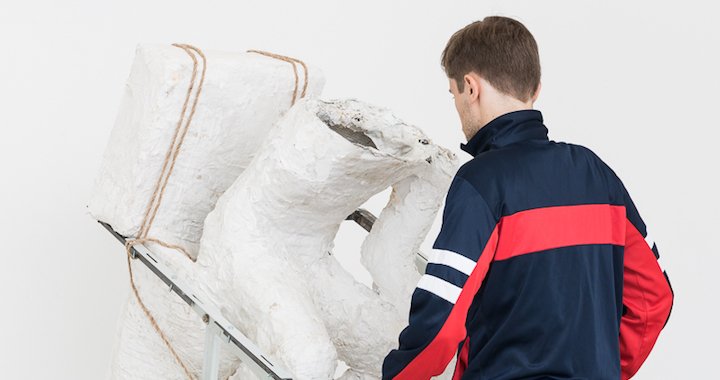
The parallel timelines of art
An interview with Lithuanian artist Augustas Serapinas
03/06/2019
“Augustas Serapinas, the youngest artist in the Venice Biennale,” reported nearly all of the art news portals when the list of the participants in the May You Live in Interesting Times exhibition curated by Ralph Rugoff was officially announced. Was this done with the intent to create a sensation? Not likely. However, the fact that the 29-year-old Lithuanian artist was selected to participate in the prestigious exhibition surprised many people. Not because it was unacceptable – not at all! It was surprising only because there are some things in life that simply seem unusual and thus make our times so interesting.
Continuing about sensations, it must be pointed out that Augustas Serapinas does not seem to be interested in provocations or cultivating sensational activities. He is in fact a rather composed, open-minded and self-confident young man who simply makes art and gains great pleasure from doing so.
From May 11 to November 24 two of Serapinas’ works are on display at the Arsenale and Giardini in Venice as part of the main curatorial exhibition May You Live in Interesting Times. At the Arsenale he has created several observation towers made especially for the personnel of the exhibition hall – three wooden turrets in diverse locations resemble the Baywatch towers and offer alternative points of view. At the same time, as Serapinas notes, the objects only perform their function when a person is sitting in them. This way the art, as well as the artist’s ideas, become activated and begin a long-term communication with the viewer.
A.S.: I know that a lot of people think of me only as the youngest artist participating in the curatorial exhibition of the Venice Biennale, but it’s not actually like that. I mean, come on, it’s been a long run already! Let’s see where I am in ten years, and if I’m still an interesting artist then, I guess I will have made some good decisions. If I looked at this exhibition as the biggest achievement of my career, I’d be dead. If you start to think like that, then you’re not interesting anymore to anyone. So for me, the Venice Biennale is just a show. Another show where I need to do my best.

Augustas Serapinas. Photo Damian Griffiths
A.P.: You have definitely had previous experience participating in exhibitions internationally, but, taking into account your age, your participation in the Biennale might come as a surprise for some people. Could you please tell us a little about when you had your first international show and how it affected your future career?
The first international exhibition that I took part in happened in 2014, when I had just finished my bachelor’s degree at the Vilnius Academy of Arts. It was a big show with some quite big names participating, but I was more concerned about my artwork, because at that time I wasn’t yet sure if it should be put on display there. I didn’t trust myself and, to be honest, that show was proof for me that I could actually do something big.
I’d also like to ask you about your work with Venice Biennale curator Ralph Rugoff. How did you meet?
Like all of my shows, someone invites me to participate, or curators do a studio visit… It’s just a process, and it always starts the same way.
Ralph came to Lithuania and we met…and then he invited me to participate in the Biennale. My relationship with curators is always as easy as that. Well, for my first show I just invited the curator myself. I asked if he wanted to collaborate, and he said yes. That’s how I got my first show. It has worked like that a few times, so, yeah, this time it also started pretty simply.

Augustas Serapinas, Chair for the Invigilator (2019), Arsenale. Photo Auguste Petre
Did you have a lot of discussions during the process?
Yes, definitely. Creating a work for an exhibition like this is a very creative process, and all of us who are a part of this show indeed worked together as a team.
There definitely was a shifting between ideas before we settled on the work that you can see here now. We live in a world that has certain definitions and restrictions, especially here in Venice. Safety and health issues have been popular topics at the Biennale, and I believe that as an artist you always need to think about how to change the world and make things better for others.
Besides the work exhibited at the Arsenale, you also have a very special work of art displayed in the Giardini.
In the Giardini there’s a work that I first did in 2018, and this is the second time that I’m showing it. In Lithuania there was an Ignalina Nuclear power plant in the town of Visaginas that was built during the Soviet era. A lot of people from different countries were brought in to work there. After the collapse of the Soviet Union they stayed on to live there and Visaginas became one of the main towns in Lithuania with a mostly Russian-speaking population. When Lithuania joined the European Union, there was an agreement signed with the government to shut down the power plant’s reactors in 2004 and 2009. When that happened, for almost all of the people who were working and living in Visaginas, everything became uncertain. It became clear that everything will change, and that the town built with a certain intendment, lost it's purpose and fell into a state of uncertainty.
I got really interested in the future of the town and the power plant when I saw that parts of some of the plant’s buildings had been put up for sale in an online auction. I decided to buy them. I’m not sure what my first thought was, but I needed to produce something for a show. I was aware of the Visaginas story, so that was a starting point.
For this piece, I invited three kids from Visaginas, whose families are related to that power plant, to come and finish the work of art on the spot. This is very important for me, because it’s a way for me to take care of the children.
If we look at it from a broader perspective, I’m glad that with this work I’ve stepped into a more social sphere.
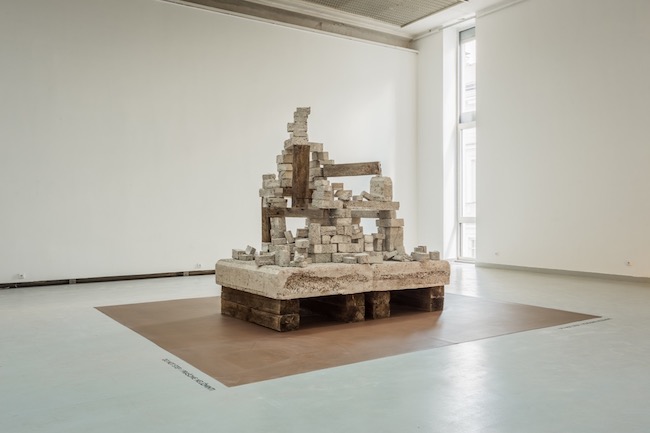
Augustas Serapinas, Vygintas, Kirilas & Semionovos (2018), Giardini. Exhibited in the Baltic Triennial 13. Photo Emalin gallery
Is it true that you mostly show your work outside of Lithuania?
Well yes, you could say that. I live in Vilnius, but I’ve actually shown my work just a few times in Lithuania. I did one show at the Vartai Gallery, but at one point I had to take the work out of the exhibition because the gallery couldn’t fulfil our agreement and display the art as it was supposed to be shown. So, I needed to withdraw the work after just a week. Then, some three years ago, I showed one work in a young artists exhibition at the Vilnius Contemporary Art Centre, and last year I took part in the Baltic Triennial, which was curated by Vincent Honoré. We had worked together before, so I happily agreed to participate in that project.
But I have to say that I’ve never concentrated on showing my work only in Lithuania. Also, I think that we have a really good, strong art scene in Lithuania. I am just one of many and I am happy to be with such surroundings. I’m really glad that I can actually make a living from art and show my work outside my home country, and I’m very happy for other Lithuanian artists who work internationally. There are in fact a lot of them.
Do you usually spend a lot of time working in the studio?
Actually, I don’t have a studio at all. I once rented a studio space to make several works, but I usually don’t work in studios. I usually work together with other people who help me to develop my work. Nowadays I barely work with my own hands, although when I started making sculptures, I always did all the work by myself. Now I work closely with a team, I give them advice and take care of the details. My work is more about managing and creating the life of a sculpture; it’s always about choosing the best options. However, I have to admit that I’m now starting to think about having a studio. I kind of want a place of my own. I believe that, in some way, this resembles a new phase of my creative path.
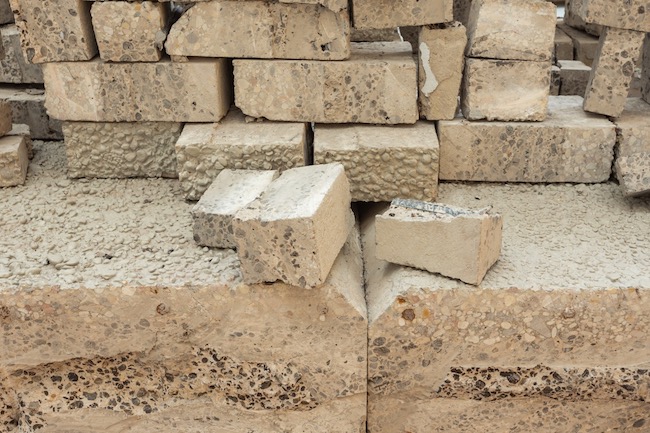
Augustas Serapinas, Vygintas, Kirilas & Semionovos, fragment. Photo Emalin gallery
Maybe having a studio gives you kind of a feeling of safety?
I don’t know, I mean…when I started making art, I didn’t have a studio, and actually my belief is that creativity often comes out of need. When you, as an artist, have nothing, that’s the best time you can have. As you start to get more money and fame, it gets worse. By that I mean that I’ve seen a few artists that work very well and have really big talent, but when they get international acclaim, they suddenly hire a lot of assistants and begin making all these shitty projects. When you have like ten or twenty people who do the work for you, it really changes the piece of art. When an artist starts feeling too comfortable, that means he needs to change something. I really enjoy the process of creation, but I also think artist needs to stay sharp and question himself.
But it doesn't mean that the artist should suffer, it is about the balance. There's definitely a lot of joy and less framed life style that can strengthen or weaken the artist (or do both). I really enjoy doing art and getting to know a lot of people through it. That’s the beauty of the art world. It’s a paradox that an artist can be poor, but on the same time, be in the same circle with rich people. I don't know is it good or bad but there is some kind of beauty in that. I’ve got to know so many different people through making art, so for me the social factor, socialising through art, is one of the nicest things that has happened. I honestly do believe that socialising for young artists is a very important thing, and it takes courage to be more open.
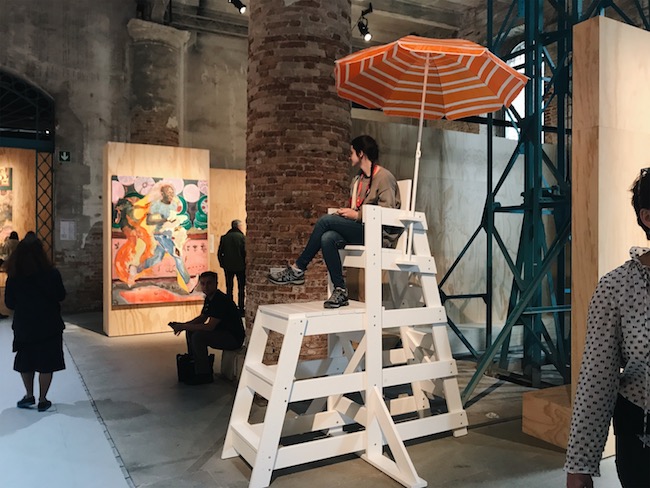
Augustas Serapinas, Chair for the Invigilator (2019), Arsenale. Photo Auguste Petre
Do you think that it takes courage particularly for younger artists from the Baltics or Eastern Europe?
Yeah, but maybe now things are changing. I can only speak for myself, but I think that this tendency is more likely in the Baltic region. We’re used to working a lot and not going anywhere else to see something else.
However, nowadays it’s much easier for artists to get international acknowledgment because of all the technological possibilities. This social networking with the help of art is more or less a contemporary thing, don’t you think?
Well yeah, I guess. But you know, the processes of globalisation have really changed all of the creative spheres. Manufacturing and people change first, and only then does the art world change as well. These are just natural processes that happen. In between all of that, for me art is a kind of a space for freedom.
“A space for freedom” is a nice statement, because a lot of people in art search for something that they can’t find in their everyday life. Do you believe that art can become a form of escape?
I wouldn’t say that art is an escape for me. I learn and think through creative processes and art is everything that happens to me and around me.
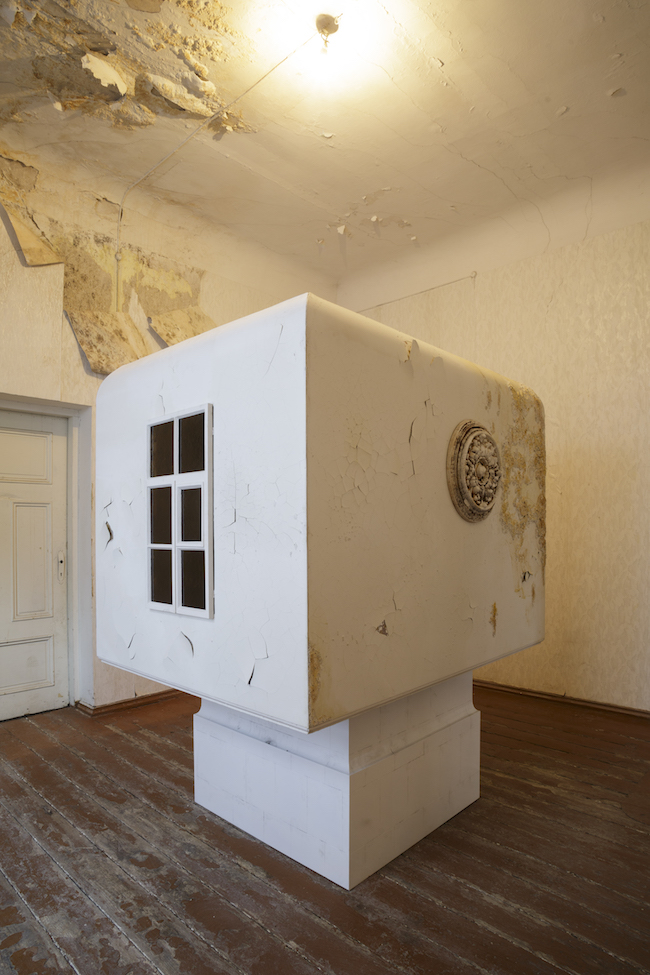
Augustas Serapinas, The Occupier (2018), RIBOCA. Photo Emalin gallery
What does gallery representation mean for a young artist like you?
When you’re not represented by a gallery, you’re actually much more dependent of certain grants, projects and their topics so it can be harder to do whatever you want or you're interested in. Usually you need to be "relvant" or responsive but every artist is different. In my case I am basically jumping from one project to another, from one life situation to another, and trying to survive. I wouldn't say that all those projects are necessarily those things that I'd want to be doing. Once I started working with galleries I became more financially independent which, in a way, transformed to a creative independence. I'm not saying that that should be an aim for every artist, I just mean that a gallery representation for me means some kind freedom.
I look at gallerists as my friends. I have very good relationships with the galleries I work with. With my London gallery, Emalin, we kind of even started our work together - me as a young artist and them a young gallery. It is nice to see how we are growing and building something together. Good galleries are always a help for artists; I am happy to know that I can call my Emalin or Apalazzo Gallery anytime, and they'll do anything that they can, if needed. But you know, all of this commercial world is a great part of it. It’s the same with the Venice Biennale – I see it as the biggest art fair in the world.
But still I’m very happy about this exhibition and very pleased to be a part of it. There’s a big difference between how the Biennale takes place now and what it was like ten years ago. The change of generations and contemporary art has had a great influence on it.
The commercialisation of art is an aspect that worries lots of professionals in the field. Do you agree that some successful artists turn their creative explorations into a business?
Well, definitely, because the art world itself is a business. The most important thing, especially for artists, is to realise what part you want to play in this business. In reality, when you understand what good this creative business can do for you, it’s also important to admit that it can change you a lot.
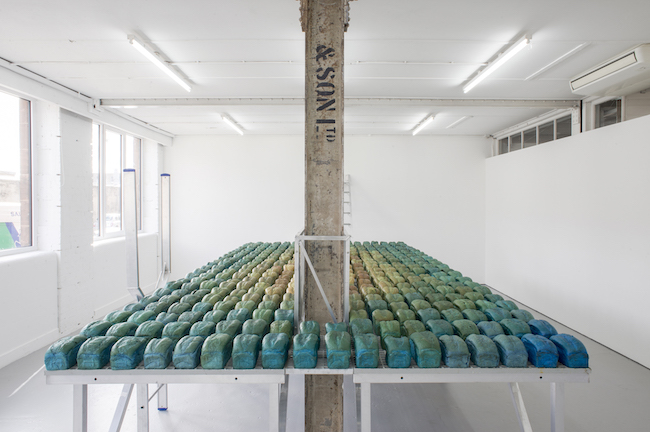
Augustas Serapinas, Blue Pen, David Dale Gallery in Glasgow. Photo Emalin gallery
Do you think in categories of selling when you produce new work?
No, I don’t think so. To my mind, it’s better to just put everything on sale. I guess it’s quite easy for me to speak about these topics, because I have a bit of experience. But my point is that basically you need to go after the art market, and you have to make very good art, whatever that means. It doesn’t mean that you always have to sell it, but you need to have the urge to talk about your art and the choices you’ve made.
You also like to reflect on social factors in your work. The background of comprehensible things is what interests you, am I right?
Yes. But I think of a background in another sense – usually it’s my own pick or choice. I select the background myself. I usually don’t start from a political statement, but instead from a humorous source or something that has a lot of interesting details and gets my attention.
One of these aspects is working with barriers, for example, the boundaries of exhibition spaces and venues. Another thing is how people who live next to exhibition spaces react to the shows that are going on there. But it’s definitely not like I’m digging too deep in the social research. At the same time, because this element is present in my art, it means that I want to find out and achieve something through it. Let’s put it this way: I like to get to know what other people think. It’s just one form that I use for my work. And this is why, in a way, it becomes so social. I’m interested in what’s behind that…that obvious part of life. Who served us coffee, for example. So for me it’s a strategy; for example, you go visit someone who lives next to the place where you have a show, and you just talk to him. And it might lead to completely different results
It can also happen that the neighbour doesn’t know about the show or even that there’s an exhibition space there.
Definitely. You know, there’s this usual life that I live, and I want to shake it up, step out of my comfort zone. There are so many things going on globally, and for me it’s interesting to dream about this other kind of world, or a parallel world around us. But I mean that in the sense of a parallel timeline. I’m just trying to bind it to another timeline and show how it’s all linked. That is how I would like to describe my works in general. I usually concentrate on the work as it is. I mean, through the smallest detail we can get to a broader view, and that is what matters.
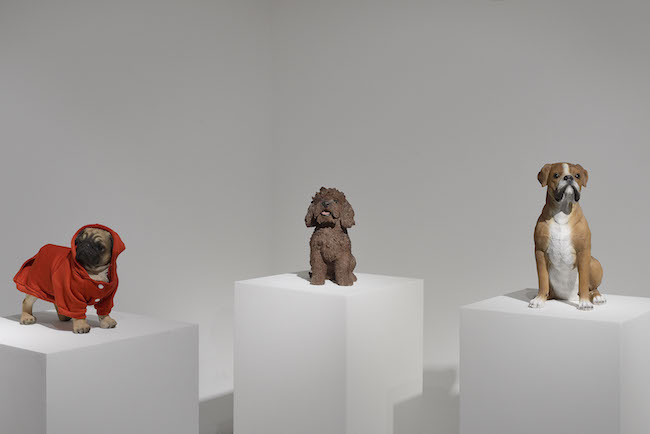
Augustas Serapinas, Where is Luna, CURA Basement in Rome. Photo Emalin gallery